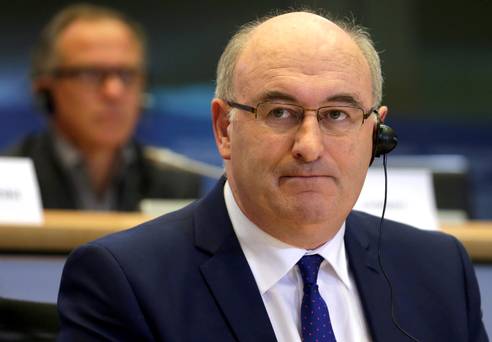U.S. stocks declined, after a seventh straight quarterly advance for the Standard Poor’s 500 Index, amid signs of economic weakness in Europe and as tensions increased in Ukraine.
Sarepta Therapeutics Inc. led makers of experimental Ebola treatments higher following the first reported U.S. case of the deadly disease. That also sent carriers from American Airlines Group Inc. to Delta Air Lines Inc. lower. EBay Inc. (EBAY) slipped 1.6 percent after JPMorgan Chase Co. and Jefferies Group LLC cut their ratings on the shares.
The SP 500 lost 0.7 percent to 1,957.73 at 9:51 a.m. in New York, falling below its average price for the past 100 days. The Dow Jones Industrial Average dropped 135.56 points, or 0.8 percent, to 16,907.34. The Russell 2000 Index lost 0.9 percent to the lowest level since May. Trading in SP 500 companies was 24 percent above the 30-day average for this time of the day.
“Geopolitical issues have caused some very short-term distortions in the market but we haven’t seen significant declines,” Mark Luschini, chief investment strategist at Philadelphia-based Janney Montgomery Scott LLC, which oversees $67 billion in assets, said by phone. “The market has treated it a relatively de minimis in light of economic and interest-rate concerns.”
Italy cut its growth forecast, German manufacturing shrank and euro-area factories lowered prices in September by the most in more than a year, underlining the mounting challenge facing policy makers before the region’s central bank meets tomorrow.
Equities also fell after a person familiar with German government policy said Russia risks an escalation of European Union sanctions if pro-Russian separatists make further military gains in eastern Ukraine.
Ukraine Sanctions
With cease-fire violations being reported daily, the EU is far from considering an easing of the sanctions imposed on Russia for its encroachment on Ukraine, according to the official, who asked not to be named because he isn’t authorized to discuss the matter publicly.
Russia’s economy will expand at 0.5 percent next year, the International Monetary Fund said, cutting its previous growth forecast in half amid fallout from the conflict in Ukraine and a weaker ruble.
In the U.S., data from the ADP Research Institute showed that American companies hired 213,000 workers in September, above the 205,000 economists predicted. The results come before the government’s labor report on Oct. 3. That data may show that payrolls added 218,000 workers in September after a 142,000 increase the month prior that was the smallest this year, according to the median estimate in a Bloomberg survey. The jobless rate probably held at 6.1 percent.
A separate report from the Institute for Supply Management at 10 a.m. New York time may show that manufacturing in the world’s largest economy continued to expand last month.
Fed Stimulus
Investors have been analyzing economic reports for clues on whether U.S. growth will withstand the end of quantitative easing and higher interest rates. The Fed, which is on course to halt its monthly bond-buying program this month, has maintained a commitment to keep rates near zero for a considerable time after completing asset purchases, while saying that future rate moves will depend on changes in the economy.
The SP 500 (SPX) rose 0.6 percent for the quarter, its seventh straight advance and longest rally since 1998. The gauge still lost 1.6 percent in September.


